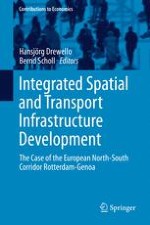The challenge of growth in transport, especially in freight transport, and scarce resources in money, landscape and local opposition against new infrastructure investment require new solutions from transport policy. This book deals with these issues taking as an example the transport corridor Rotterdam-Genoa, one of the most heavily used in Europe. In 2010 the INTERREG project Code24 with partners from five European countries started with the aim to develop a transnational strategy to strengthen and to develop the corridor. The main objective was to accelerate and jointly develop the transport capacity of the entire corridor by ensuring optimal economic benefits and spatial integration while reducing negative impacts on the environment at local and regional level. These issues are highlighted in the book from an interdisciplinary perspective, taking into account spatial, economic, environmental and political aspects.
